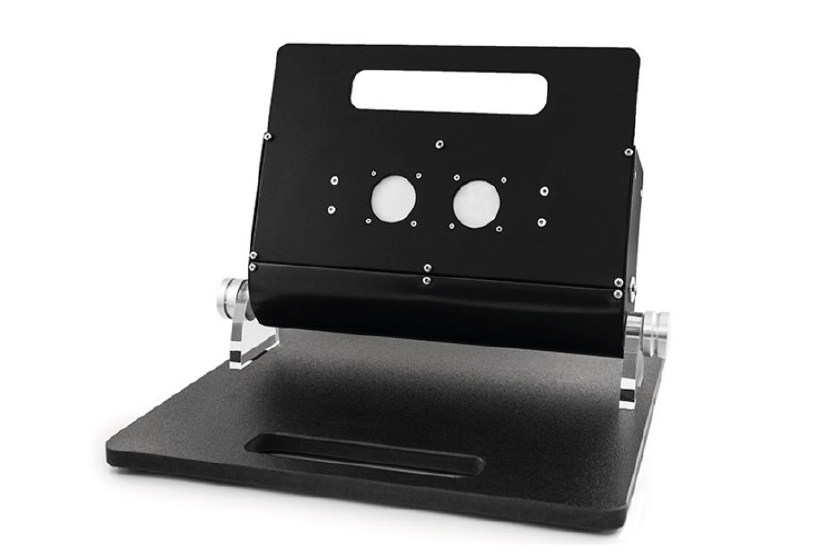Light Discrimination Apparatus
Model: 14011A

The Light Discrimination Apparatus illustrates the various psychophysical methods used in visual discrimination, such as limits, average error, and constant stimuli, among others. By watching the two 1.375"-diameter light stimuli as the examiner adjusts light intensity, the subject must determine whether lights have equal intensity or one of them is brighter than the other. The subject or examiner can independently vary the intensity of each stimulus. Light stimulus use calibrated high intensity LEDs. Therefore, relative differences between the two stimuli are very low and highly reliable.
- Line Voltage: 105/125V AC 50/60 Hz - 220V AC 50/60Hz
- Stimulus Lamp: 2 x Warm light High intensity LEDs. 3500K CCT (3220K - 3710K), CRI: Minimun 80 (x2) , Typical 85 (x2). Flux 67 - 80 , 160 - 120 degrees of viewing angle.
- Instruction Manual included
- LCD and keypad control
- Adjustable main body to subjects viewing angle, height -exclusive feature-, and viewing comfort.
- USB port for serial communication -the software is supplied, at no charge- Easy-to-read LCD display.
- Time and accuracy measurements allowed.
- LUX measurement on final adjustment -independent window measurement- for meaningful data generation.
- Built from high-quality components manufactured in developed countries -USA, Japan, Germany, Italy, among others.-
- Ergonomic handle for easy carrying.
- Medical Grade power source (short circuit protected through reprogrammable fuse)
- 2 x independent LUX metering ICs.
- 256 steps LED control (8 bits).
- Smooth noiseless-cued LED control paddle.
- Aluminum - Stainless steel and acrylic body for sturdy usage.
- High resistance (and 100% recyclable) polymer base, easy to clean.
- Black coated electrostatic painting for clueless distraction, high durability and easy maintenance.
- Acrylic windows for high resistance and safety.
Light discrimination is a crucial ability in daily live, mainly to artists, photographers, illumination technicians, and movie directors. It is also a critical ability among pilots, air traffic controllers and firefighters, among others. The subject task is to judge whether two calibrated stimuli lights match or differ. The system provides a LUX measurement for each light that allows the evaluator or researcher to obtain a good measurement of the light discrimination accuracy. This design equipment concept is also a great tool for classroom demonstrations or experimental labs, and highly recommended for demonstrations in psychology (sensory and perception), physiology and other related courses.
The subject should be sitting in a comfortable chair in front of the desk where the equipment is set up. The adjustable body of the equipment will be set so that the subject can see the equipment as parallel as possible to the face. The room should be darken or dimmed for better results with the lowest possible level of noise and distractions. Pink or blank noise can be helpful for this endeavor . Subjects will be required with two different tasks. First, the subject matches experimenters selection of first window (left one) with a similar light level in the second window (right one) using the smooth clueless rotary paddle control. Discrimination ability will be judged among several trials, by recording the experimenters selected LUX for first stimulus, subject judged LUX level, and the difference between both. Second, the subject judges whether or not the two light stimulus windows match. Results can be recorded in the provided forms.

